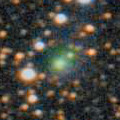
|
Now it is bright as 9.9 mag (Apr. 19, Juan Jose Gonzalez). It is expected to brighten up to 9 mag in summer. In the Southern Hemisphere, it stays observable in good condition for a long time until the comet will fade out. In the Northern Hemisphere, it is observable only until June.
Date(TT) R.A. (2000) Decl. Delta r Elong. m1 Best Time(A, h)
Apr. 21 19 41.98 -6 35.8 2.269 2.549 94 10.8 3:51 (321, 40)
Apr. 28 19 42.30 -8 28.1 2.113 2.511 101 10.6 3:40 (327, 41)
|

|
Now it is 11.5 mag (Apr. 18, Juan Jose Gonzalez). It stays bright as 11 mag for a long time. In the Southern Hemisphere, it is not observable for a long time after this. In the Northern Hemispehre, it stays observable for a long time until the comet fades out. But it will be getting lower gradually after this.
Date(TT) R.A. (2000) Decl. Delta r Elong. m1 Best Time(A, h)
Apr. 21 4 57.90 41 30.6 3.141 2.610 49 11.0 20:07 (121, 32)
Apr. 28 5 9.85 42 52.4 3.195 2.605 46 11.0 20:15 (125, 28)
|
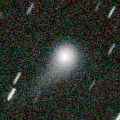
|
Now it is 12.1 mag (Apr. 18, Juan Jose Gonzalez). It stays 12 mag for a long time until spring in 2019. In the Northern Hemisphere, it stays observable in good condition for a long time, although it becomes unobservable temporarily from mid June to August. In the Southern Hemisphere, it is not observable until September.
Date(TT) R.A. (2000) Decl. Delta r Elong. m1 Best Time(A, h)
Apr. 21 7 52.34 63 58.6 2.832 2.824 79 12.1 20:07 (155, 55)
Apr. 28 7 48.77 60 29.7 2.907 2.802 73 12.1 20:15 (146, 53)
|
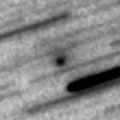
|
It brightened rapidly as expected. Now it is very bright as 11.0 mag (Apr. 16, Chris Wyatt). It stays at 11-12 mag until June. In the Southern Hemisphere, it stays observable in excellent condition. In the Northern Hemisphere, it will be unobservable from April to June when the comet becomes brightest.
Date(TT) R.A. (2000) Decl. Delta r Elong. m1 Best Time(A, h)
Apr. 21 20 48.58 -39 57.3 0.941 1.344 87 12.4 3:51 (327, 4)
Apr. 28 21 26.75 -39 26.9 0.919 1.321 86 12.1 3:40 (323, 2)
|

|
The condition of this apparition is worst. It brightens up to 12.5 mag from April to May. But it is not observable at all.
Date(TT) R.A. (2000) Decl. Delta r Elong. m1 Best Time(A, h)
Apr. 21 1 26.34 7 52.4 1.607 0.626 7 12.8 3:51 (249,-15)
Apr. 28 2 11.51 10 45.7 1.605 0.604 3 12.5 3:40 (242,-19)
|
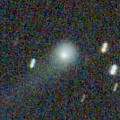
|
Now it is very bright as 12.3 mag (Apr. 18, Juan Jose Gonzalez). It will be observable at 12-13 mag for a long time from 2017 to 2018. In the Southern Hemisphere, it will be hardly observable after this.
Date(TT) R.A. (2000) Decl. Delta r Elong. m1 Best Time(A, h)
Apr. 21 14 32.80 55 58.3 3.277 3.769 111 12.9 0:39 (180, 69)
Apr. 28 14 8.20 56 44.7 3.325 3.778 109 13.0 23:40 (180, 68)
|
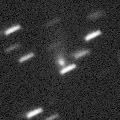
|
Now it is 15.1 mag (Mar. 22, Alexander Baransky). It will brighten up to 9 mag in summer. However, it is hardly observable when it is bright. In the Northern Hemisphere, it is not observable until late December. In the Southern Hemisphere, it is observable from July to September, but it locates in extremely low.
Date(TT) R.A. (2000) Decl. Delta r Elong. m1 Best Time(A, h)
Apr. 21 2 13.97 31 21.5 2.652 1.744 20 13.5 20:07 (131, -1)
Apr. 28 2 28.86 29 56.7 2.593 1.650 16 13.2 20:15 (133, -5)
|

|
Appearing in the morning sky. Now it is a bit brighter, 15.7 mag (Apr. 7, Jean-Francois Soulier).
Date(TT) R.A. (2000) Decl. Delta r Elong. m1 Best Time(A, h)
Apr. 21 22 55.29 -3 7.0 6.427 5.786 46 13.8 3:51 (280, 8)
Apr. 28 22 59.40 -2 34.0 6.343 5.785 52 13.7 3:40 (281, 11)
|
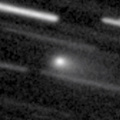
|
Now it is bright as 12.6 mag (Apr. 16, Chris Wyatt). It will be observable at 13-14 mag in good condition from spring to summer.
Date(TT) R.A. (2000) Decl. Delta r Elong. m1 Best Time(A, h)
Apr. 21 21 14.89 -22 2.5 1.527 1.616 76 14.1 3:51 (311, 14)
Apr. 28 21 33.34 -20 12.9 1.478 1.611 78 14.0 3:40 (309, 16)
|
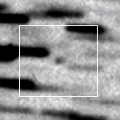
|
Now it is 17.1 mag (Mar. 24, Toshihiko Ikemura, Hirohisa Sato). It will brighten rapidly after this, and it will brighten up to 11 mag from summer to autumn. It is observable in excellent condition in the Southern Hemisphere. It locates somewhat low in the Northern Hemisphere.
Date(TT) R.A. (2000) Decl. Delta r Elong. m1 Best Time(A, h)
Apr. 21 20 46.37 -16 13.9 2.110 2.190 80 14.6 3:51 (312, 23)
Apr. 28 20 58.85 -15 53.8 2.015 2.169 84 14.3 3:40 (313, 24)
|

|
It brightened up to 7.1 mag from May to June in 2017 (June 21, Juan Jose Gonzalez). Now it is fading. It has already faded down to 15.2 mag (Mar. 4, B. Lutkenhoner). In the Southern Hemisphere, it stays observable for a long time after this. It will never be observable again in the Northern Hemisphere.
Date(TT) R.A. (2000) Decl. Delta r Elong. m1 Best Time(A, h)
Apr. 21 0 44.52 -43 24.0 4.515 4.061 57 14.8 3:51 (303,-33)
Apr. 28 0 54.22 -43 9.6 4.529 4.127 60 14.8 3:40 (303,-32)
|
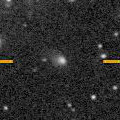
|
Now it is 15.7 mag (Mar. 16, Toshihiko Ikemura, Hirohisa Sato). It is expected to brighten up to 13-14 mag from 2018 to 2019. In the Northern Hemisphere, it stays observable in good condition for a long time. In the Southern Hemisphere, it locates extremely low until summer.
Date(TT) R.A. (2000) Decl. Delta r Elong. m1 Best Time(A, h)
Apr. 21 19 31.67 43 42.3 4.075 4.127 85 15.2 3:51 (239, 68)
Apr. 28 19 26.45 44 27.9 3.971 4.088 89 15.1 3:40 (233, 71)
|

|
It brightened up to 12.7 mag in winter (Jan. 6, Thomas Lehmann). Now it is fading. It has already faded down to 15.0 mag (Mar. 22, Toshihiko Ikemura, Hirohisa Sato). It will be getting lower gradually after this in the evening sky. It will be unobservable in May.
Date(TT) R.A. (2000) Decl. Delta r Elong. m1 Best Time(A, h)
Apr. 21 4 20.10 15 32.2 3.125 2.382 35 15.3 20:07 (101, 12)
Apr. 28 4 31.28 17 34.1 3.225 2.426 31 15.4 20:15 (106, 9)
|
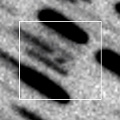
|
Now it is 16.9 mag (Apr. 18, Toshihiko Ikemura, Hirohisa Sato). It will brighten rapidly, and brighten up to 7 mag from August to September. In the Northern Hemisphere, it will be observable in excellent condition. In the Southern Hemisphere, it will be unobservable from July to August. But it will be observable in good condition before and after tha.
Date(TT) R.A. (2000) Decl. Delta r Elong. m1 Best Time(A, h)
Apr. 21 19 26.45 14 40.8 1.737 2.060 93 15.7 3:51 (306, 60)
Apr. 28 19 37.00 17 21.0 1.624 1.996 95 15.3 3:40 (304, 63)
|

|
Now it is 16.2 mag (Mar. 17, S. G. McAndrew). It stays 15 mag from 2018 to 2019, and it will be observable for a long time in the Southern Hemisphere. In the Northern Hemisphere, it will never be observable again.
Date(TT) R.A. (2000) Decl. Delta r Elong. m1 Best Time(A, h)
Apr. 21 13 10.55 -67 36.5 3.998 4.630 123 15.4 23:12 ( 0,-13)
Apr. 28 12 57.59 -67 57.3 3.955 4.599 124 15.3 22:31 ( 0,-13)
|
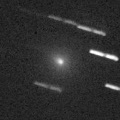
|
It brightened up to 11 mag in February. Now it is fading. It has already faded down to 14.5 mag (Apr. 5, Martin Masek). It stays observable in the evening sky until the comet fades out.
Date(TT) R.A. (2000) Decl. Delta r Elong. m1 Best Time(A, h)
Apr. 21 5 41.22 11 53.4 1.797 1.482 55 15.5 20:07 ( 86, 27)
Apr. 28 6 5.00 12 2.3 1.895 1.548 54 16.1 20:15 ( 88, 25)
|

|
It brightened up to 9.2 mag from November to December (Nov. 16, Juan Jose Gonzalez). Now it is fading rapidly. It has already faded down to 16.6 mag (Apr. 12, Toshihiko Ikemura, Hirohisa Sato). It stays observable in good condition until summer when it fades out.
Date(TT) R.A. (2000) Decl. Delta r Elong. m1 Best Time(A, h)
Apr. 21 13 54.27 5 35.1 1.152 2.132 162 15.7 0:00 ( 0, 60)
Apr. 28 13 47.42 5 25.1 1.211 2.180 158 16.1 23:21 ( 0, 60)
|

|
Appearing in the morning sky. It is observable at 15 mag in 2018, in good condition in the Southern Hemisphere. It locates somewhat low in the Northern Hemisphere.
Date(TT) R.A. (2000) Decl. Delta r Elong. m1 Best Time(A, h)
Apr. 21 22 27.26 -18 3.9 3.446 3.053 59 15.8 3:51 (296, 5)
Apr. 28 22 36.07 -17 29.6 3.375 3.063 63 15.8 3:40 (297, 7)
|
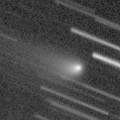
|
Appearing in the morning sky. It is fading now. But it stays 16 mag until summer. But actually, it is 18.1 mag (Mar. 23, Toshihiko Ikemura, Hirohisa Sato), fainter than this ephemeris.
Date(TT) R.A. (2000) Decl. Delta r Elong. m1 Best Time(A, h)
Apr. 21 18 52.63 -25 12.3 3.171 3.621 108 15.9 3:51 (343, 28)
Apr. 28 18 42.35 -25 50.7 3.086 3.666 117 15.9 3:40 (350, 28)
|
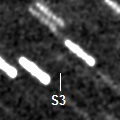
|
It is expected to approach to Sun down to 0.2 a.u. and brighten up to 3 mag in August. Now it is 17.5 mag (Mar. 24, D. Buczynski). In the Northern Hemisphere, it stays observable in the morning sky until early August when the comet brightens up to 6 mag. It is not observable at all in the Southern Hemisphere.
Date(TT) R.A. (2000) Decl. Delta r Elong. m1 Best Time(A, h)
Apr. 21 23 30.66 53 30.6 2.952 2.440 50 16.2 3:51 (223, 30)
Apr. 28 23 45.75 54 5.6 2.848 2.335 50 16.0 3:40 (222, 30)
|
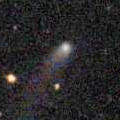
|
Now it is 16.1 mag (Apr. 15, Toshihiko Ikemura, Hirohisa Sato). It stays 16 mag for a long time from 2017 to 2018. It is observable in excellent condition in the Northern Hemisphere. It locates very low in the Southern Hemisphere.
Date(TT) R.A. (2000) Decl. Delta r Elong. m1 Best Time(A, h)
Apr. 21 7 5.38 44 39.9 5.646 5.441 73 16.0 20:07 (120, 55)
Apr. 28 7 5.47 44 48.9 5.767 5.452 66 16.1 20:15 (120, 49)
|

|
It brightens up to 16 mag in spring. In the Southern Hemisphere, it stays observable until August, but it will be unobservable after that. In the Northern Hemisphere, it stays unobservable until June, but it will be observable in good condition after that. Its cometary activity was observed on Mar. 26 (M. Mommert, D. Polishook, N. Moskovitz).
Date(TT) R.A. (2000) Decl. Delta r Elong. m1 Best Time(A, h)
Apr. 21 23 18.42 -27 32.9 1.543 1.259 54 16.0 3:51 (297,-10)
Apr. 28 23 40.16 -23 25.7 1.532 1.246 54 16.0 3:40 (293, -9)
|

|
Now it is 16.0 mag (Apr. 6, Sandor Szabo). It will be fading slowly until summer.
Date(TT) R.A. (2000) Decl. Delta r Elong. m1 Best Time(A, h)
Apr. 21 11 22.16 13 12.8 2.768 3.549 134 16.1 21:24 ( 0, 68)
Apr. 28 11 20.68 13 6.0 2.842 3.551 127 16.2 20:55 ( 0, 68)
|
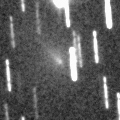
|
It brightened up to 15-16 mag in winter. Appearing in the morning sky. It stays observable at 16.5 mag for a while. It will be observable in good condition after this in the Southern Hemisphere. But it stays low in the Northern Hemisphere.
Date(TT) R.A. (2000) Decl. Delta r Elong. m1 Best Time(A, h)
Apr. 21 22 57.47 -3 11.0 2.238 1.706 46 16.6 3:51 (279, 8)
Apr. 28 22 55.55 -4 45.6 2.137 1.749 54 16.6 3:40 (284, 11)
|

|
Now it is 16.6 mag (Apr. 9, Toshihiko Ikemura, Hirohisa Sato). It will be fading slowly after this.
Date(TT) R.A. (2000) Decl. Delta r Elong. m1 Best Time(A, h)
Apr. 21 10 17.34 8 37.5 9.060 9.637 122 16.6 20:20 ( 0, 64)
Apr. 28 10 17.34 8 49.2 9.164 9.642 115 16.6 20:15 ( 12, 63)
|

|
Now it is 16.7 mag (Apr. 15, Toshihiko Ikemura, Hirohisa Sato). It will brighten up to 15 mag in January, 2019. It stays observable in excellent condition in the Northern Hemispehre. It is observable only until June in the Southern Hemisphere.
Date(TT) R.A. (2000) Decl. Delta r Elong. m1 Best Time(A, h)
Apr. 21 11 11.33 31 58.7 3.490 4.106 121 16.8 21:13 ( 0, 87)
Apr. 28 11 1.94 32 51.5 3.562 4.068 113 16.9 20:36 ( 0, 88)
|

|
Now it is 16.0 mag (Apr. 6, Sandor Szabo). It is observable in good conditioin in the Northern Hemisphere. It is not observable for a long time in the Southern Hemisphere.
Date(TT) R.A. (2000) Decl. Delta r Elong. m1 Best Time(A, h)
Apr. 21 6 16.87 72 24.8 8.907 8.644 71 16.9 20:07 (160, 43)
Apr. 28 6 25.73 72 4.3 8.960 8.635 68 16.9 20:15 (159, 41)
|
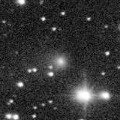
|
Now it is 16.4 mag (Mar. 14, Toshihiko Ikemura, Hirohisa Sato). It will be fading after this. In the Northern Hemisphere, it stays observable in the northern sky for a long time. It is not observable at all after this in the Southern Hemisphere.
Date(TT) R.A. (2000) Decl. Delta r Elong. m1 Best Time(A, h)
Apr. 21 3 8.78 86 52.7 3.926 3.798 75 16.9 20:07 (176, 34)
Apr. 28 6 4.38 86 19.7 3.987 3.833 73 17.0 20:15 (176, 37)
|
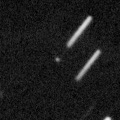
|
Now it is 16.3 mag (Apr. 15, Toshihiko Ikemura, Hirohisa Sato). It is observable at 17 mag from spring to summer.
Date(TT) R.A. (2000) Decl. Delta r Elong. m1 Best Time(A, h)
Apr. 21 15 8.76 41 10.1 1.279 2.024 124 17.1 1:14 (180, 84)
Apr. 28 15 4.62 40 12.8 1.251 2.004 124 17.0 0:43 (180, 85)
|

|
Now it is 16.8 mag (Mar. 15, iTelescope Observatory, Siding Spring). In the Southern Hemisphere, it is observable at 17 mag in good condition. It will be too low to observe in June. In the Northern Hemisphere, it locates extremely low only in spring.
Date(TT) R.A. (2000) Decl. Delta r Elong. m1 Best Time(A, h)
Apr. 21 5 51.56 -26 43.3 2.893 2.706 69 17.0 20:07 ( 53, 4)
Apr. 28 6 4.47 -24 5.5 2.944 2.708 66 17.1 20:15 ( 58, 2)
|
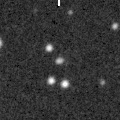
|
Now it is 16.8 mag (Apr. 5, Martin Masek). It is observable at 17 mag in good condition in spring.
Date(TT) R.A. (2000) Decl. Delta r Elong. m1 Best Time(A, h)
Apr. 21 12 49.34 -11 3.6 1.553 2.535 164 17.1 22:51 ( 0, 44)
Apr. 28 12 46.34 -10 26.6 1.577 2.533 156 17.2 22:21 ( 0, 45)
|

|
Now it is 16.7 mag (Mar. 17, Toshihiko Ikemura, Hirohisa Sato). It will be fading gradually after this, and it will be fainter than 18 mag in autumn. In the Northern Hemisphere, it stays observable in good condition for a long time. In the Southern Hemisphere, it will never be observable again.
Date(TT) R.A. (2000) Decl. Delta r Elong. m1 Best Time(A, h)
Apr. 21 22 34.06 66 46.7 7.477 7.098 64 17.1 3:51 (209, 39)
Apr. 28 22 43.55 67 32.3 7.506 7.120 63 17.1 3:40 (208, 40)
|

|
Now it is 17.3 mag (Mar. 12, Toshihiko Ikemura, Hirohisa Sato). It will be fading after this, and it will be fainter than 18 mag in July.
Date(TT) R.A. (2000) Decl. Delta r Elong. m1 Best Time(A, h)
Apr. 21 11 42.10 24 18.8 4.959 5.677 131 17.1 21:44 ( 0, 79)
Apr. 28 11 37.05 25 4.9 5.075 5.702 124 17.2 21:11 ( 0, 80)
|

|
Now it is 16.8 mag (Apr. 12, Toshihiko Ikemura, Hirohisa Sato). It will be fainter than 18 mag in summer.
Date(TT) R.A. (2000) Decl. Delta r Elong. m1 Best Time(A, h)
Apr. 21 14 51.58 -12 8.5 5.362 6.342 165 17.2 0:57 ( 0, 43)
Apr. 28 14 48.37 -11 11.7 5.360 6.359 172 17.2 0:27 ( 0, 44)
|
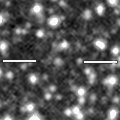
|
Now it is 18.4 mag (Mar. 17, Toshihiko Ikemura, Hirohisa Sato). It stays observable at 17 mag in good condition from spring to autumn.
Date(TT) R.A. (2000) Decl. Delta r Elong. m1 Best Time(A, h)
Apr. 21 20 50.10 -1 38.2 6.150 5.997 76 17.4 3:51 (300, 33)
Apr. 28 20 53.17 -1 7.9 6.046 5.995 82 17.4 3:40 (303, 36)
|

|
It brightened up to 8-9 mag in autumn. Now it is fading rapidly. It has already faded down to 18.3 mag (Apr. 15, Toshihiko Ikemura, Hirohisa Sato). In the Northern Hemisphere, it stays observable in good condition for a long time. In the Southern Hemisphere, it will never be observable again after this.
Date(TT) R.A. (2000) Decl. Delta r Elong. m1 Best Time(A, h)
Apr. 21 8 27.68 59 12.8 2.786 2.865 84 17.4 20:07 (154, 61)
Apr. 28 8 40.08 57 11.1 2.920 2.934 80 17.6 20:15 (147, 60)
|
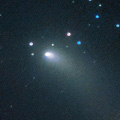
|
It brightened up to 9-10 mag from December to February. Now it is fading very rapidly. It has already faded, fainter than 18.5 mag (Apr. 17, Martin Masek). In the Northern Hemisphere, it stays extremely low after this. In the Southern Hemisphere, it will be getting higher in the morning sky after this, then it stays observable in good condition.
Date(TT) R.A. (2000) Decl. Delta r Elong. m1 Best Time(A, h)
Apr. 21 22 11.93 -25 10.8 1.366 1.317 65 17.4 3:51 (304, 3)
Apr. 28 22 17.75 -30 42.5 1.340 1.428 73 17.7 3:40 (309, 1)
|
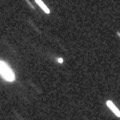
|
Now it is 16.9 mag (Apr. 12, Toshihiko Ikemura, Hirohisa Sato). It will be fading gradually after this.
Date(TT) R.A. (2000) Decl. Delta r Elong. m1 Best Time(A, h)
Apr. 21 10 46.09 38 4.2 7.806 8.260 113 17.4 20:48 (180, 87)
Apr. 28 10 42.94 37 30.5 7.921 8.281 107 17.5 20:18 (180, 88)
|

|
Now it is 17.7 mag (Mar. 25, D. Buczynski). It stays observable at 17-18 mag in good condition for a while.
Date(TT) R.A. (2000) Decl. Delta r Elong. m1 Best Time(A, h)
Apr. 21 15 5.74 -4 30.3 1.773 2.742 160 17.4 1:12 ( 0, 50)
Apr. 28 14 59.95 -4 6.0 1.791 2.778 166 17.5 0:38 ( 0, 51)
|

|
It has not been observed yet in this apparition. It will brighten rapidly, and it is expected to brighten up to 10 mag in autumn. It will be observable in excellent condition in the Northern Hemisphere. It stays low in the Southern Hemisphere.
Date(TT) R.A. (2000) Decl. Delta r Elong. m1 Best Time(A, h)
Apr. 21 21 38.35 -13 59.3 2.739 2.546 68 17.8 3:51 (301, 16)
Apr. 28 21 48.77 -12 50.3 2.605 2.492 72 17.5 3:40 (301, 18)
|
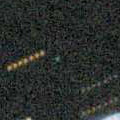
|
First return of a new periodic comet which brightened up to 13 mag in 2013. Now it is 18.8 mag (Apr. 6, Michael Jager). It will brighten very rapidly after this, up to 11 mag in summer. In the Southern Hemisphere, it stays observable in good condition all through this apparition. In the Northern Hemisphere, it is not observable at the high light from mid June to mid August.
Date(TT) R.A. (2000) Decl. Delta r Elong. m1 Best Time(A, h)
Apr. 21 8 34.94 35 25.6 0.743 1.264 91 18.3 20:07 ( 97, 72)
Apr. 28 8 35.43 33 32.4 0.722 1.191 85 17.7 20:15 ( 95, 64)
|

|
Now it is 19.7 mag (Mar. 24, Toshihiko Ikemura, Hirohisa Sato). It was predicted to be observable at 17.5 mag in good condition from spring to summer. But recently, it is fainter than predicted.
Date(TT) R.A. (2000) Decl. Delta r Elong. m1 Best Time(A, h)
Apr. 21 16 35.08 -8 18.4 3.057 3.883 140 17.7 2:41 ( 0, 47)
Apr. 28 16 32.56 -8 8.0 2.998 3.882 147 17.7 2:11 ( 0, 47)
|
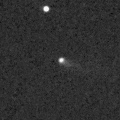
|
It brightened up to 15.7 mag in February (Feb. 11, Catalina Sky Survey). Now it is fading rapidly. It has already faded down to 17.1 mag (Apr. 15, Toshihiko Ikemura, Hirohisa Sato). It will be fainter than 18 mag in late April.
Date(TT) R.A. (2000) Decl. Delta r Elong. m1 Best Time(A, h)
Apr. 21 13 15.21 17 23.2 0.604 1.556 149 17.8 23:17 ( 0, 72)
Apr. 28 13 14.00 15 10.6 0.653 1.593 146 18.1 22:48 ( 0, 70)
|
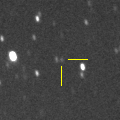
|
Now it is 17.9 mag (Mar. 16, ATLAS-HKO, Haleakala). It stays 18 mag from 2018 to 2020. It is observable in good condition in the Southern Hemisphere. It locates extremely low in the Northern Hemisphere.
Date(TT) R.A. (2000) Decl. Delta r Elong. m1 Best Time(A, h)
Apr. 21 12 32.02 -37 53.5 3.634 4.518 148 17.9 22:34 ( 0, 17)
Apr. 28 12 27.50 -37 31.7 3.647 4.513 145 17.9 22:02 ( 0, 17)
|
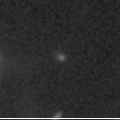
|
Now it is 17.0 mag (Mar. 26, Alexander Baransky). It is observable at 18 mag in good condition in spring.
Date(TT) R.A. (2000) Decl. Delta r Elong. m1 Best Time(A, h)
Apr. 21 12 22.02 -1 5.7 1.261 2.212 154 17.9 22:24 ( 0, 54)
Apr. 28 12 19.64 -0 9.0 1.278 2.193 147 17.9 21:54 ( 0, 55)
|
|
![]()
 C/2015 O1 ( PanSTARRS )
C/2015 O1 ( PanSTARRS ) C/2017 T3 ( ATLAS )
C/2017 T3 ( ATLAS ) 29P/Schwassmann-Wachmann 1
29P/Schwassmann-Wachmann 1 37P/Forbes
37P/Forbes 48P/Johnson
48P/Johnson C/2015 V2 ( Johnson )
C/2015 V2 ( Johnson ) C/2017 M4 ( ATLAS )
C/2017 M4 ( ATLAS ) C/2017 K6 ( Jacques )
C/2017 K6 ( Jacques ) 21P/Giacobini-Zinner
21P/Giacobini-Zinner C/2017 B3 ( LINEAR )
C/2017 B3 ( LINEAR ) 185P/Petriew
185P/Petriew 62P/Tsuchinshan 1
62P/Tsuchinshan 1 65P/Gunn
65P/Gunn C/2015 VL62 ( Lemmon-Yeung-PanSTARRS )
C/2015 VL62 ( Lemmon-Yeung-PanSTARRS ) C/2017 S3 ( PanSTARRS )
C/2017 S3 ( PanSTARRS ) C/2016 A1 ( PanSTARRS )
C/2016 A1 ( PanSTARRS ) (3552) Don Quixote
(3552) Don Quixote 74P/Smirnova-Chernykh
74P/Smirnova-Chernykh C/2017 S6 ( Catalina )
C/2017 S6 ( Catalina ) C/2014 B1 ( Schwartz )
C/2014 B1 ( Schwartz ) C/2018 A3 ( ATLAS )
C/2018 A3 ( ATLAS ) C/2010 U3 ( Boattini )
C/2010 U3 ( Boattini ) C/2016 N4 ( MASTER )
C/2016 N4 ( MASTER ) C/2018 C2 ( Lemmon )
C/2018 C2 ( Lemmon ) C/2018 E1 ( ATLAS )
C/2018 E1 ( ATLAS ) 143P/Kowal-Mrkos
143P/Kowal-Mrkos C/2014 OE4 ( PanSTARRS )
C/2014 OE4 ( PanSTARRS ) C/2017 D3 ( ATLAS )
C/2017 D3 ( ATLAS ) C/2017 E3 ( PanSTARRS )
C/2017 E3 ( PanSTARRS ) C/2017 M5 ( TOTAS )
C/2017 M5 ( TOTAS ) C/2017 O1 ( ASASSN )
C/2017 O1 ( ASASSN ) C/2017 T1 ( Heinze )
C/2017 T1 ( Heinze ) C/2014 R3 ( PanSTARRS )
C/2014 R3 ( PanSTARRS ) 30P/Reinmuth 1
30P/Reinmuth 1 64P/Swift-Gehrels
64P/Swift-Gehrels 364P/2018 A2 ( PanSTARRS )
364P/2018 A2 ( PanSTARRS ) 187P/LINEAR
187P/LINEAR 365P/2017 U6 ( PanSTARRS )
365P/2017 U6 ( PanSTARRS ) 186P/Garradd
186P/Garradd 105P/Singer Brewster
105P/Singer Brewster![]()







































